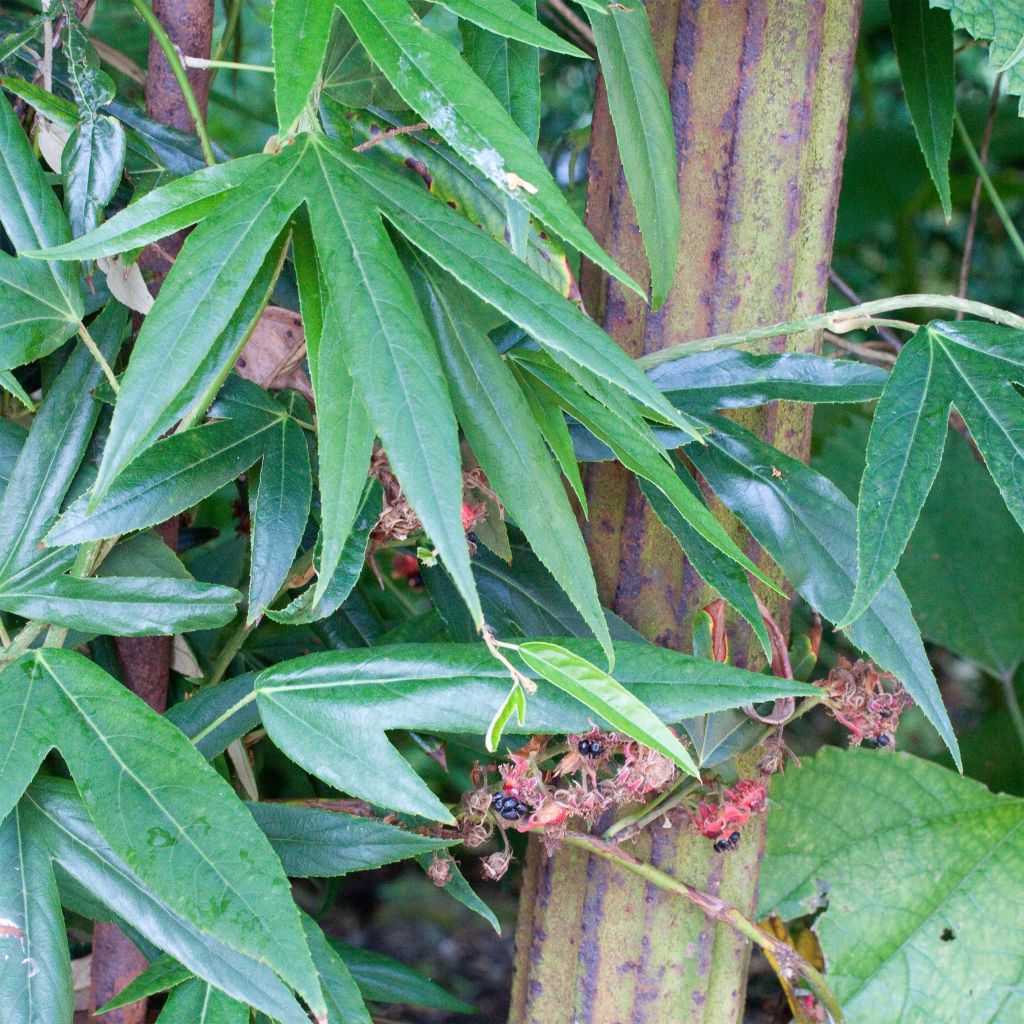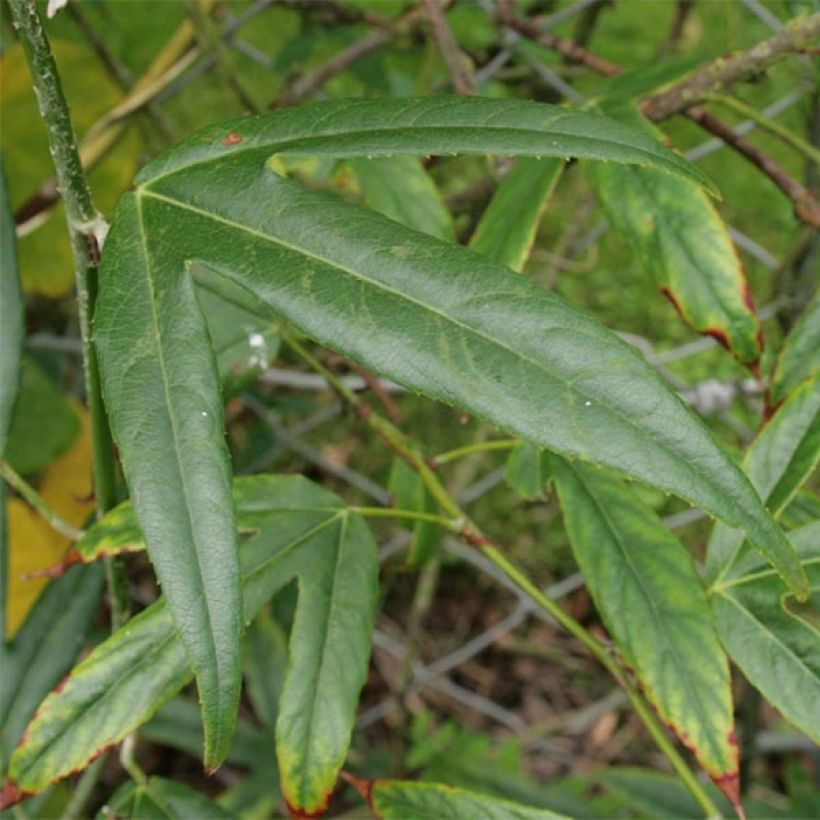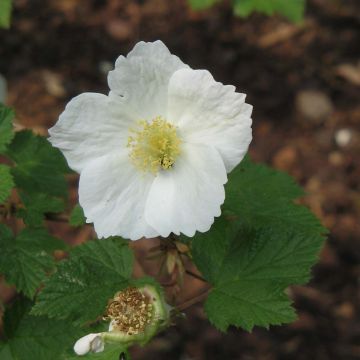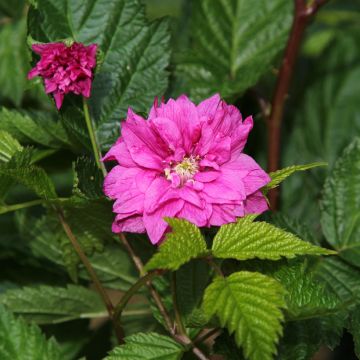

Rubus henryi bambusarum


Rubus henryi bambusarum
Rubus henryi bambusarum
Rubus henryi bambusarum
Henry's Bramble
Excellent service. Well done for the quick delivery and packaging. Well done for this evergreen climbing Rubus, specific research area plant offered exclusively. Laurent M
Laurent M., 13/04/2018
Special offer!
Receive a €20 voucher for any order over €90 (excluding delivery costs, credit notes, and plastic-free options)!
1- Add your favorite plants to your cart.
2- Once you have reached €90, confirm your order (you can even choose the delivery date!).
3- As soon as your order is shipped, you will receive an email containing your voucher code, valid for 3 months (90 days).
Your voucher is unique and can only be used once, for any order with a minimum value of €20, excluding delivery costs.
Can be combined with other current offers, non-divisible and non-refundable.
Why not try an alternative variety in stock?
View all →This plant carries a 24 months recovery warranty
More information
We guarantee the quality of our plants for a full growing cycle, and will replace at our expense any plant that fails to recover under normal climatic and planting conditions.

Would this plant suit my garden?
Set up your Plantfit profile →
Description
This ornamental Bramble is very vigorous, with fast growth, and has thin, flexible, and thorny stems. It has beautiful palmate foliage, dark green in colour, shiny and leathery, resembling that of certain bamboos. In May-June, it displays long clusters of small pink-red flowers, followed by edible fruits.
Rubus henryi bambusarum is a spreading ornamental Bramble with slender, flexible, and arching woody climbing stems, which are thorny. It is native to China and belongs to the Rosaceae family. This fast-growing Bramble is a very vigorous liana that needs support to climb and can easily exceed 6m (20 ft) in height. Its evergreen foliage, as indicated by its species name, consists of very characteristic leathery leaves, resembling those of certain bamboos, measuring 6 to 12cm (2 to 5in) in length, lanceolate and divided into 3 elongated narrow lobes, shiny dark green on the upper side, and white and felted on the underside. In May-June, long clusters of 5 to 10 cup-shaped flowers, 1 to 2cm (1in) in diameter, pink-red in colour, bloom, followed by edible fruits that are shiny and spherical, 1 to 2cm (1in) in diameter, turning black when ripe, in July-August.
The Bamboo-leaved Bramble, highly ornamental due to its characteristic leaves, is a vigorous and robust plant that can be used both as groundcover and a climbing plant. However, be careful, as like many brambles, it can quickly become invasive, spreading with formidable efficiency and difficult to control! It therefore requires regular monitoring to contain its spread. As a climber, it needs support to rise. Climbing easily on various structures, its splendid dark green, shiny, trilobed, stiff, and leathery foliage will provide an elegant decoration to chosen hosts, whether it be a trellis or a pergola, or large and small trees. It will be ideal for covering an unsightly fence, creating a dense green screen. It can also climb on a large evergreen tree with small leaves to create a contrast of foliage. It is also possible to use it as groundcover on a slope or steep terrain. It can be combined with other climbing plants such as Liana Roses, Clematis, Ornamental Vines, and can climb on large trees such as a Handkerchief Tree, a Judas Tree, a Tulip Tree, or a Japanese Flowering Cherry.
The genus name Rubus comes from the Latin word ruber, meaning red, alluding to the colour of the fruit. The Henry's Bramble was named in honour of Aimé Constant Fidèle Henry (1801-1875), who was the first to collect it in China. Its juvenile leaves are used in China for herbal tea, and its fruits are edible.
Report an error about the product description
Rubus henryi bambusarum in pictures


Plant habit
Flowering
Foliage
Botanical data
Rubus
henryi
bambusarum
Rosacées
Henry's Bramble
China
Other Rubus - Blackberry
View all →Planting and care
Rubus henryi bambusarum, is easy to grow, has excellent hardiness, tolerating negative temperatures of -20°C (1°F). This Ornamental Bramble prefers sunny to semi-shaded exposures but also tolerates shade well. It appreciates moist soil, fairly rich in humus, well-drained, and slightly acidic. It can be very invasive, spreading with formidable efficiency, thanks to its long flexible stems taking root in contact with the soil. It is therefore advisable to contain its rapid development by pruning after flowering to limit its size.
Planting period
Intended location
Care
Planting & care advice
-
, onOrder confirmed
Reply from on Promesse de fleurs
Similar products
Haven't found what you were looking for?
Hardiness is the lowest winter temperature a plant can endure without suffering serious damage or even dying. However, hardiness is affected by location (a sheltered area, such as a patio), protection (winter cover) and soil type (hardiness is improved by well-drained soil).

Photo Sharing Terms & Conditions
In order to encourage gardeners to interact and share their experiences, Promesse de fleurs offers various media enabling content to be uploaded onto its Site - in particular via the ‘Photo sharing’ module.
The User agrees to refrain from:
- Posting any content that is illegal, prejudicial, insulting, racist, inciteful to hatred, revisionist, contrary to public decency, that infringes on privacy or on the privacy rights of third parties, in particular the publicity rights of persons and goods, intellectual property rights, or the right to privacy.
- Submitting content on behalf of a third party;
- Impersonate the identity of a third party and/or publish any personal information about a third party;
In general, the User undertakes to refrain from any unethical behaviour.
All Content (in particular text, comments, files, images, photos, videos, creative works, etc.), which may be subject to property or intellectual property rights, image or other private rights, shall remain the property of the User, subject to the limited rights granted by the terms of the licence granted by Promesse de fleurs as stated below. Users are at liberty to publish or not to publish such Content on the Site, notably via the ‘Photo Sharing’ facility, and accept that this Content shall be made public and freely accessible, notably on the Internet.
Users further acknowledge, undertake to have ,and guarantee that they hold all necessary rights and permissions to publish such material on the Site, in particular with regard to the legislation in force pertaining to any privacy, property, intellectual property, image, or contractual rights, or rights of any other nature. By publishing such Content on the Site, Users acknowledge accepting full liability as publishers of the Content within the meaning of the law, and grant Promesse de fleurs, free of charge, an inclusive, worldwide licence for the said Content for the entire duration of its publication, including all reproduction, representation, up/downloading, displaying, performing, transmission, and storage rights.
Users also grant permission for their name to be linked to the Content and accept that this link may not always be made available.
By engaging in posting material, Users consent to their Content becoming automatically accessible on the Internet, in particular on other sites and/or blogs and/or web pages of the Promesse de fleurs site, including in particular social pages and the Promesse de fleurs catalogue.
Users may secure the removal of entrusted content free of charge by issuing a simple request via our contact form.
The flowering period indicated on our website applies to countries and regions located in USDA zone 8 (France, the United Kingdom, Ireland, the Netherlands, etc.)
It will vary according to where you live:
- In zones 9 to 10 (Italy, Spain, Greece, etc.), flowering will occur about 2 to 4 weeks earlier.
- In zones 6 to 7 (Germany, Poland, Slovenia, and lower mountainous regions), flowering will be delayed by 2 to 3 weeks.
- In zone 5 (Central Europe, Scandinavia), blooming will be delayed by 3 to 5 weeks.
In temperate climates, pruning of spring-flowering shrubs (forsythia, spireas, etc.) should be done just after flowering.
Pruning of summer-flowering shrubs (Indian Lilac, Perovskia, etc.) can be done in winter or spring.
In cold regions as well as with frost-sensitive plants, avoid pruning too early when severe frosts may still occur.
The planting period indicated on our website applies to countries and regions located in USDA zone 8 (France, United Kingdom, Ireland, Netherlands).
It will vary according to where you live:
- In Mediterranean zones (Marseille, Madrid, Milan, etc.), autumn and winter are the best planting periods.
- In continental zones (Strasbourg, Munich, Vienna, etc.), delay planting by 2 to 3 weeks in spring and bring it forward by 2 to 4 weeks in autumn.
- In mountainous regions (the Alps, Pyrenees, Carpathians, etc.), it is best to plant in late spring (May-June) or late summer (August-September).
The harvesting period indicated on our website applies to countries and regions in USDA zone 8 (France, England, Ireland, the Netherlands).
In colder areas (Scandinavia, Poland, Austria...) fruit and vegetable harvests are likely to be delayed by 3-4 weeks.
In warmer areas (Italy, Spain, Greece, etc.), harvesting will probably take place earlier, depending on weather conditions.
The sowing periods indicated on our website apply to countries and regions within USDA Zone 8 (France, UK, Ireland, Netherlands).
In colder areas (Scandinavia, Poland, Austria...), delay any outdoor sowing by 3-4 weeks, or sow under glass.
In warmer climes (Italy, Spain, Greece, etc.), bring outdoor sowing forward by a few weeks.























































